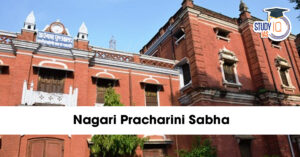Table of Contents
Satyashodhak Samaj
Jyotiba Phule founded Satyashodhak Samaj. It advocated for the emancipation of widows, untouchables, and members of lower castes as well as against brahminical rule. In Satara in 1919, tenants rose against their Brahman landlords by the anti-religious stance of the Samaj. When the Satyashodhak Samaj arrived with their doctrine mocking Brahman superiority, the uprising in neighbouring Maharashtrian cities assumed a similar form.
Peasants stopped relying on Brahmans for religious rituals, interrupted Brahman rituals, vandalised temples, and destroyed idols. These peasant uprisings in Maharashtra showed how popular and effective Satyashodhak Samaj’s doctrine was at mobilising the populace. In this essay, we’ll talk about the benefits of Satyashodhak activities for preparing for the UPSC Exam.
Satyashodhak Samaj History
It was started by Jyotiba Phule to fight against this society’s rigid, irrational brahminical status and unfair caste system. He questioned the Brahmins who represented themselves as God’s representatives and a conduit to the Supreme Being.
The Vedic culture’s ideology, the Upanishads, and the primacy of Aryan society were all rejected by the Samaj. He claimed that he was opposed to the Aryan society’s efforts to oppress and deprive non-Aryans instead.
Following Phule’s demise, Shahu Maharaj, the Maratha ruler of the princely state of Kolhapur, continued the effort. Later, this movement was maintained by Bhaurao Patil and other Maratha leaders including Nana Patil, Keshavrao Jedhe, Madhavrao Bagal, and Khanderao Bagal. However, as these leaders began to join the Indian National Congress in the 1930s, the Samaj began to progressively disintegrate.
Satyashodhak Samaj Founder
Jyotibha Phule established the Truth Seekers’ Society known as Satyashodhak Samaj. It condemned the exploitation of caste-based and religious systems.
Objectives of Satyashodhak Samaj
- Education, social rights, and civil liberties for women, underprivileged people, and members of lower castes were the core aims of the society. It denounced the exploitation of religion and caste.
- The goal is to free the Shudras and ati Shudras from the exploitative policies of the Brahmins.
- Convincing and persuading each individual that they are a child of one god and that God is therefore their father. God can be reached directly without the aid of a medium.
- They contended that God can hear the voice and the object of prayer before it is voiced out into the world. They intend to entirely eradicate the aristocratic bureaucracy and the social standing of Brahmins as their principal targets.
- People in the community referred to God as their father and were therefore expected to live in a spirit of brotherhood and fraternity.
Satyashodhak Samaj Oath and Affirmations
- People from lower castes must have access to education.
- Promoting domestic manufacturing and spreading the word about cottage industry.
- Eliminating the long-established social rank of Brahmins.
Satyashodhak Samaj UPSC
The Satyashodhak Samaj, a lower caste group, made a vital contribution to eradicating Maratha boundaries and forging Maratha identity. There was enough justification for Mahatma Phule’s campaign, even though it was anti-Brahmin. Raising awareness among the lower castes in preparation for a social revolution included anti-Brahmanism. In this article for UPSC Exam Preparation, learn everything there is to know about Satyashodhak Samaj.
| Related Articles | |
| Brahmo Samaj | Prarthana Samaj |
| Paramahansa Mandali | Dharma Sabha |
| Arya Samaj | Mahajanapadas |


 Nagari Pracharini Sabha Revival: Backgro...
Nagari Pracharini Sabha Revival: Backgro...
 Ryotwari System in India, Features, Impa...
Ryotwari System in India, Features, Impa...
 Battle of Plassey, History, Causes, Impa...
Battle of Plassey, History, Causes, Impa...





















